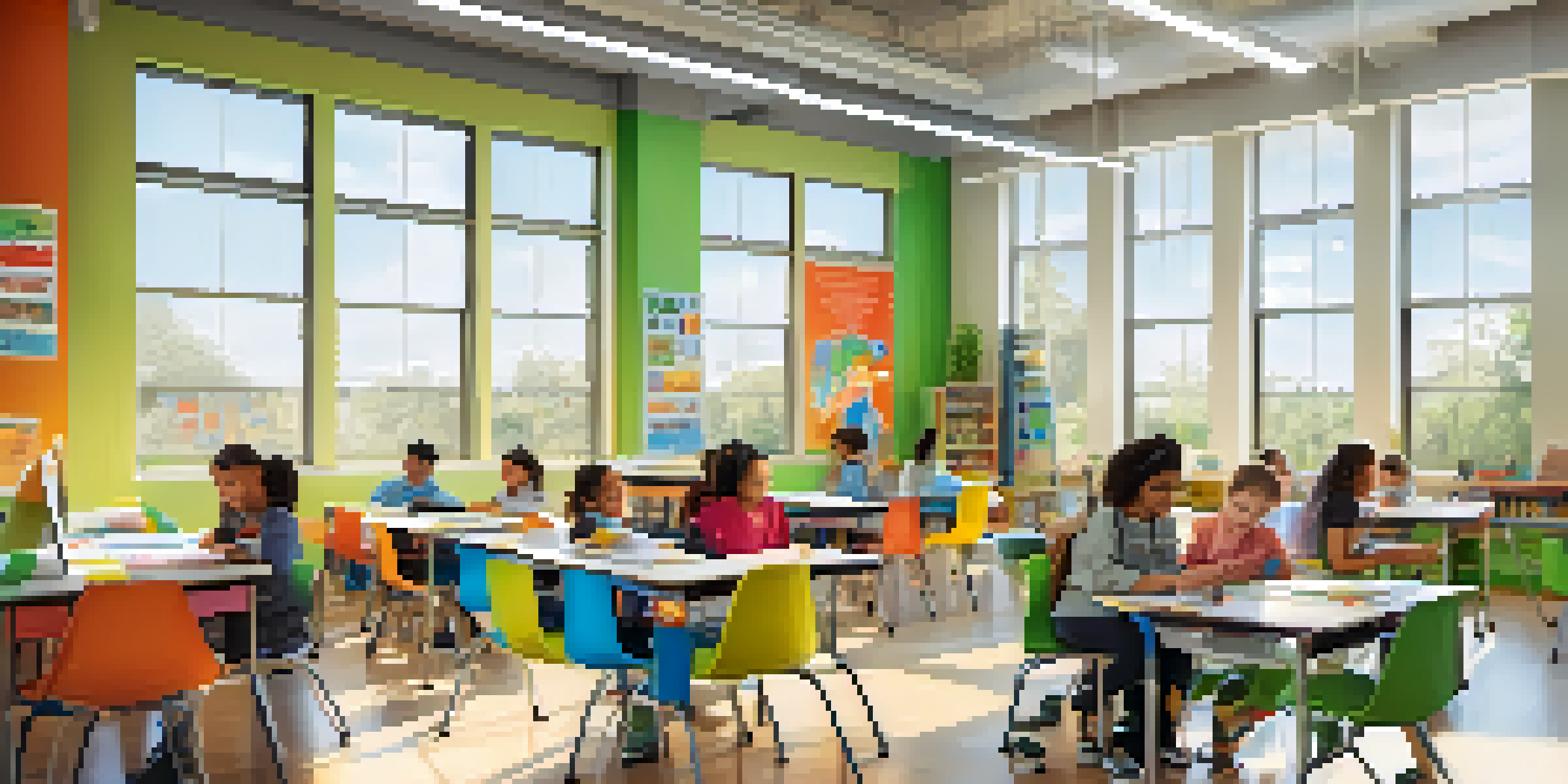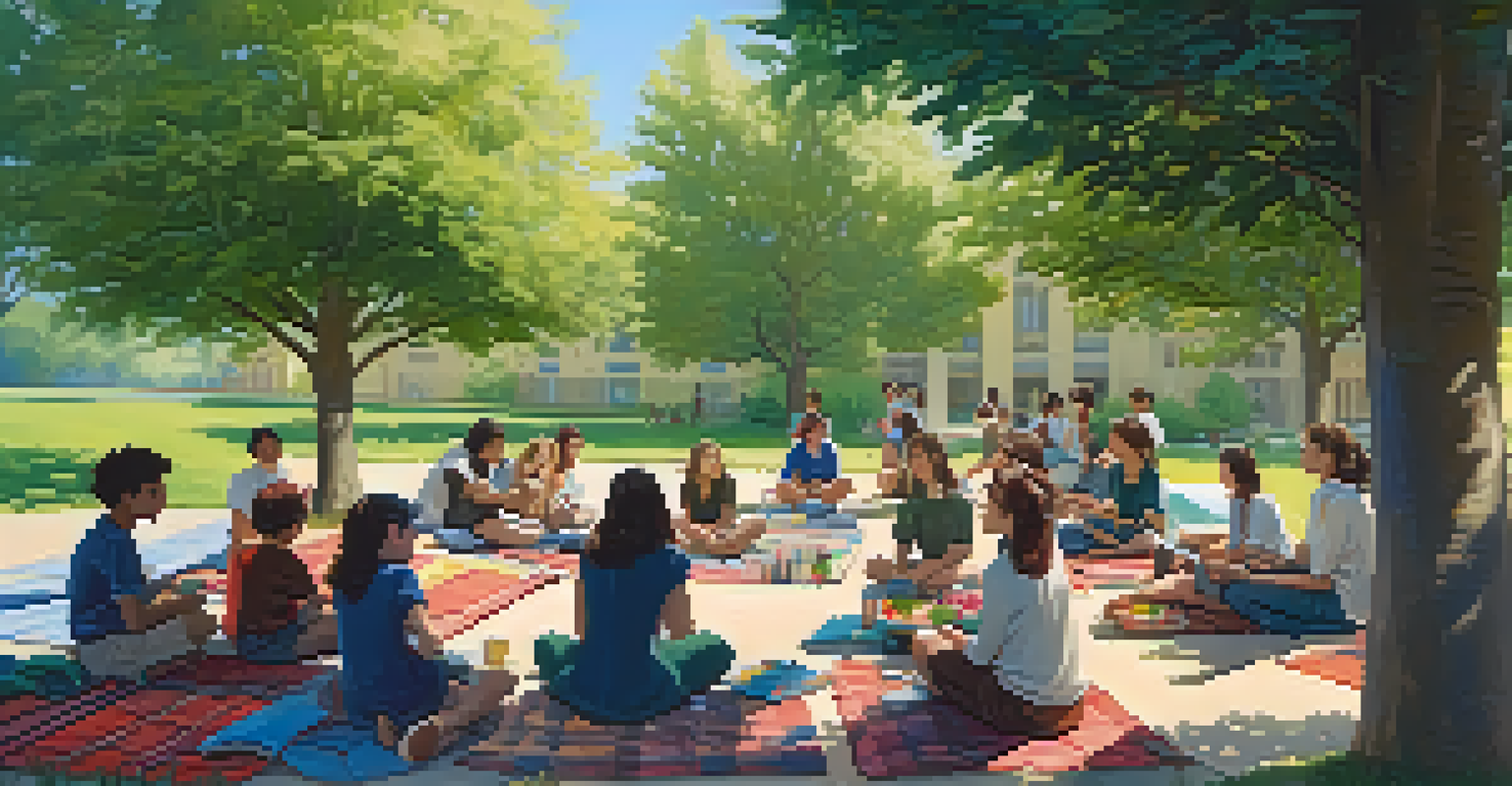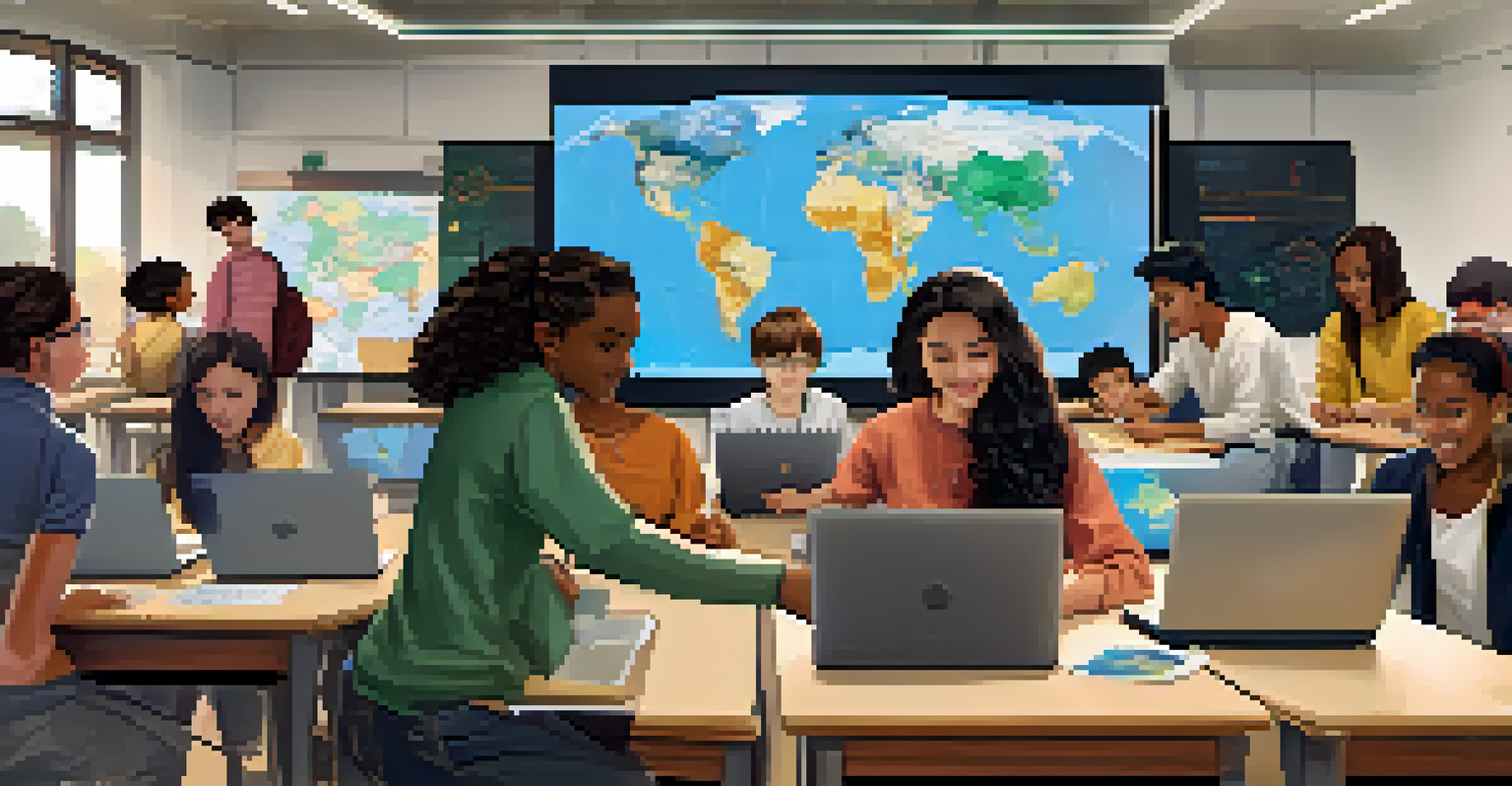The Future of Learning Environments Post-Pandemic

The Shift to Hybrid Learning: A New Normal
The pandemic forced educational institutions to adapt quickly, leading to a hybrid learning model that blends in-person and online education. This shift has allowed students to enjoy flexibility in their learning schedules, which can enhance engagement and accessibility. For instance, students can attend lectures remotely while still participating in hands-on activities at school. As we move forward, this hybrid approach is likely to become the standard, offering a more personalized learning experience.
The great thing about digital learning is that it allows the learner to take control of their education, at their own pace, in their own way.
Moreover, hybrid learning environments can cater to diverse learning styles. Some students thrive in traditional settings, while others excel in virtual spaces. By combining these methods, educators can create a more inclusive atmosphere that meets the needs of all learners. Schools are now increasingly recognizing the importance of offering choices, which can lead to improved academic outcomes.
This evolution also emphasizes the role of technology in education. Tools like virtual classrooms and collaborative platforms are essential for facilitating effective learning. As technology continues to advance, we can expect more innovative solutions that further enhance the hybrid model, making education more engaging and effective for everyone.
Embracing Technology: Tools for Tomorrow's Classrooms
As we look to the future, technology will play a pivotal role in shaping learning environments. The pandemic accelerated the adoption of digital tools, and now educators are seeking ways to leverage these resources effectively. For example, interactive learning platforms and educational apps can make lessons more engaging and provide immediate feedback to students. This shift not only enhances the learning experience but also prepares students for a tech-driven world.

In addition, artificial intelligence (AI) is becoming a powerful ally in education. AI can personalize learning experiences by analyzing student performance and providing tailored resources. Imagine a classroom where each student receives individualized attention based on their unique strengths and challenges. This level of customization can significantly boost student motivation and success.
Hybrid Learning is the New Standard
The pandemic has accelerated the adoption of hybrid learning models, offering students flexibility and catering to diverse learning styles.
However, integrating technology into learning environments also comes with challenges. Educators need proper training and support to utilize these tools effectively. Schools must invest in professional development to ensure teachers feel confident in using technology, ultimately leading to better outcomes for students.
Mental Health Awareness: A Priority in Education
The pandemic highlighted the importance of mental health in education, prompting a shift in focus toward students' well-being. Many learners experienced anxiety and stress during lockdowns, which can impact their ability to learn. As a result, schools are now prioritizing mental health resources, including counseling services and wellness programs. This emphasis on support can create a healthier learning environment for all students.
Education is not the filling of a pail, but the lighting of a fire.
Furthermore, educators are recognizing the need to foster social-emotional learning (SEL) in their curricula. SEL helps students develop skills like empathy, resilience, and self-regulation—essential tools for navigating life’s challenges. By incorporating SEL into classrooms, schools can nurture well-rounded individuals who are better equipped to handle stress and adversity.
Creating a culture of open communication about mental health is crucial. Schools are beginning to implement initiatives that encourage students to share their feelings and seek help when necessary. This change not only supports individual students but also fosters a sense of community, where everyone feels valued and understood.
Flexible Spaces: Rethinking Classroom Design
The traditional classroom setup is evolving into versatile learning spaces that promote collaboration and creativity. Post-pandemic, educators are reimagining how classrooms can be designed to facilitate various learning activities. For instance, movable furniture and open layouts allow for group work and interactive lessons. This flexibility supports different teaching methods and encourages student engagement.
Additionally, outdoor learning environments are gaining popularity as educators recognize the benefits of fresh air and nature. Outdoor classrooms can enhance students' focus and reduce stress, leading to a more productive learning experience. Schools are increasingly incorporating green spaces into their designs, allowing students to connect with nature while learning.
Technology Enhances Education
Innovative tools like AI and interactive platforms are reshaping classrooms, making learning more engaging and personalized.
Ultimately, the design of learning spaces will play a critical role in shaping educational outcomes. As schools invest in innovative environments, they create opportunities for students to thrive and develop essential skills needed for the future.
Personalized Learning: Meeting Individual Needs
Personalized learning has gained momentum in the wake of the pandemic, emphasizing the importance of tailoring education to individual student needs. With the rise of data-driven insights, educators can now design lessons that cater to various learning styles and paces. For example, adaptive learning technologies can adjust content based on a student's performance, ensuring they receive the right level of challenge and support.
This approach not only enhances student engagement but also promotes accountability. When learners have a say in their education, they are more likely to take ownership of their progress. Educators can foster this sense of autonomy by involving students in goal-setting and reflection on their learning journeys.
However, implementing personalized learning requires a shift in mindset for both educators and students. It necessitates ongoing communication and collaboration to ensure that everyone is aligned on goals and expectations. As schools embrace this model, they create environments where every student can flourish.
Global Collaboration: Expanding Learning Horizons
The pandemic has shown us that learning can extend beyond geographical boundaries. Virtual classrooms have opened the door to global collaboration, allowing students to connect with peers from different cultures and backgrounds. This exposure enriches the learning experience, fostering a sense of global citizenship among students.
For instance, projects that involve international partnerships can help students develop critical thinking and problem-solving skills while gaining unique perspectives on global issues. By working together, learners can tackle real-world challenges, preparing them to be proactive and engaged citizens.
Mental Health is a Key Focus
Schools are prioritizing mental health resources and social-emotional learning to create supportive environments for students.
As we progress into the future, we can expect more schools to embrace global collaboration as a core component of their curricula. This approach not only enhances academic learning but also cultivates empathy and understanding in an increasingly interconnected world.
Lifelong Learning: A Shift in Mindset
The pandemic has underscored the importance of lifelong learning, encouraging both educators and students to adopt a growth mindset. As the world continues to change rapidly, the ability to learn and adapt is crucial for success. This shift is leading to a reevaluation of how education is perceived—not just as a phase of life but as an ongoing journey.
Lifelong learning encourages individuals to seek knowledge and skills beyond traditional schooling. Online courses, workshops, and community programs are becoming more accessible, empowering people to pursue their passions and interests at any age. This culture of continuous learning fosters resilience and adaptability, essential traits in today's fast-paced world.

As educational institutions embrace this mindset, they are also adapting their offerings to support lifelong learning. This includes providing resources for adult learners and creating flexible pathways for skill development. By doing so, schools can play a pivotal role in shaping a future where learning never truly ends.